LabAdviser/314/Preparation 314-307: Difference between revisions
< LabAdviser | 314
mNo edit summary |
|||
| (79 intermediate revisions by 3 users not shown) | |||
| Line 1: | Line 1: | ||
'''Feedback to this page''': '''[mailto:labadviser@ | <!-- <span style="background:#FF2800">THIS PAGE IS UNDER CONSTRUCTION</span>[[image:Under_construction.png|200px]] --> | ||
'''Feedback to this page''': '''[mailto:labadviser@nanolab.dtu.dk?Subject=Feed%20back%20from%20page%20http://labadviser.nanolab.dtu.dk/index.php/LabAdviser/314/Preparation_314-307 click here]''' | |||
''This section is written by DTU Nanolab internal if nothing else is stated.'' | |||
[[Category:314]] | |||
[[Category:314-Preparation]] | |||
= Preparation equipment and processes = | |||
At DTU Nanolab building 314/307 we have a variety of preparation equipment for different purposes available. <br /> | |||
REMEMBER: You need an introduction to the equipments and prepare a risk assessment for your process if not available yet. | |||
{| border="0" cellspacing="100" style="margin: auto;" | |||
|+ | |||
| align="center" width="200px" heigth="250px" | '''Solid material preparation''' [[image:Prep solid.png|180px|frameless |border |link=LabAdviser/314/Preparation_314-307/Solid-matter|Solid material ]] | |||
| align="center" width="200px" | '''Soft Matter preparation''' [[image:Prep_soft.jpg|180px|frameless |border |link=LabAdviser/314/Preparation_314-307/Soft-matter|Soft Matter ]] | |||
| align="center" width="200px" | '''Coating''' [[image:Prep_coating.jpg|180px|frameless |border |link=LabAdviser/314/Preparation_314-307/Coating|Coating ]] | |||
|+ | |||
| align="center" width="200px" | '''Light microscopes''' [[image:Prep_lightmic.jpg|180px|frameless |border |link=LabAdviser/314/Preparation_314-307/Light-Mic|Light microscopes ]] | |||
| align="center" width="200px" | '''TEM holders''' [[image:Prep_TEM.jpg|180px|frameless |border |link=LabAdviser/314/Microscopy 314-307/TEM/Sample Holders|TEM sample holders ]] | |||
| align="center" width="200px" | '''Others''' [[image:Prep_other.jpg|180px|frameless |border |link=LabAdviser/314/Preparation_314-307/Others|Others ]] | |||
|} | |||
<!-- | |||
==Optical Microscopes== | ==Optical Microscopes== | ||
1) '''Olympus BX51 colorview''' | |||
1) Olympus BX51 colorview | |||
[http://www.physics.umu.se/digitalAssets/140/140383_optical-microscope--olympus-bx51-.pdf Operation Manual] | [http://www.physics.umu.se/digitalAssets/140/140383_optical-microscope--olympus-bx51-.pdf Operation Manual] | ||
| Line 12: | Line 34: | ||
<br clear="all" /> | <br clear="all" /> | ||
2) Olympus SZ61 stereo Zoom Microscope | 2) '''Olympus SZ61 stereo Zoom Microscope''' | ||
[http://www.olympus-lifescience.com/en/microscopes/stereo/sz61/ Brochure] | [http://www.olympus-lifescience.com/en/microscopes/stereo/sz61/ Brochure] | ||
| Line 20: | Line 42: | ||
<br clear="all" /> | <br clear="all" /> | ||
3) Leica MZ75 stereo microscope | 3) '''Leica MZ75 stereo microscope''' | ||
The Leica MZ75 stereo microscope offers 0.63x to 5x zoom and helps in viewing grids or cutting samples before the cryo-ultramicrotome procedures. | |||
Operating manual: | |||
[[:File:Operation Manual Leica_MZ75.pdf]] | [[:File:Operation Manual Leica_MZ75.pdf]] | ||
For further information about the machine usage contact mktracy@dtu.dk [https://www.dtu.dk/english/service/phonebook/person?id=141983&cpid=260636&tab=0]. | |||
[[File:Leica MZ75.jpg|400px|left|thumb|Location at DTU Nanolab Building 307, Room 906]] | |||
[[File: | |||
<br clear="all" /> | <br clear="all" /> | ||
==Ion milling == | ==Ion milling == | ||
| Line 160: | Line 184: | ||
<br clear="all" /> --> | <br clear="all" /> --> | ||
<!-- | |||
==Sonicators == | ==Sonicators == | ||
| Line 178: | Line 203: | ||
<br clear="all" /> | <br clear="all" /> | ||
3) Sonic Dismembrator. | |||
For further information on the machine usage contact: mktracy@dtu.dk. | |||
[[File:xxx.jpg|250px|left|thumb|Location Building 314, Room 040]]<br /> | |||
<br clear="all" /> | |||
==Hot plates == | ==Hot plates == | ||
| Line 194: | Line 228: | ||
[[File:Vitrobot.jpg|200px|thumb|left|DTU Cens FEI Vitrobot]]<br /> --> | [[File:Vitrobot.jpg|200px|thumb|left|DTU Cens FEI Vitrobot]]<br /> --> | ||
[[File: | <!-- | ||
'''Leica EM GP2''' | |||
The Leica plunge freezer (EM GP2) is used to vitrifying (freezing) samples for cryo-TEM under liquid ethane temperature. | |||
Operating manual:[[:File:Leica EM GP2 Operating manual.pdf]] | |||
For further information on the machine usage contact mktracy@dtu.dk [https://www.dtu.dk/english/service/phonebook/person?id=141983&cpid=260636&tab=0]. | |||
[[File:Plunge Freezer.jpg|400px|left|thumb|Leica EM GP2 Location at DTU Nanolab Building 314, Room 014 (Tecnai T20)]]<br /> | |||
<br clear="all" /> | <br clear="all" /> | ||
== Microtomes == | == Microtomes == | ||
1) Our RMC MT-7 Microtome is a vintage piece of equipment and can be used for planning specimens for SEM/EDX and/or for cutting relative thin slices (approx. 200nm thick) for TEM. First, the specimen needs to be embedded into a resin or an epoxy, and then can be sliced with a glass or diamond knife. At DTU Cen we can offer only glass knifes. | 1) Ultramicrotome | ||
[[File: | '''RMC MT-7 Microtome''' | ||
Our RMC MT-7 Microtome is a vintage piece of equipment and can be used for planning specimens for SEM/EDX and/or for cutting relative thin slices (approx. 200nm thick) for TEM. First, the specimen needs to be embedded into a resin or an epoxy, and then can be sliced with a glass or diamond knife. At DTU Nanolab Cen we can offer only glass knifes. We also offer the possibility to make glass knives using the '''LKB Knifemaker 7801A'''. | |||
Risk Assessment of RMC MT-7 Microtome: [[:File:APV RMC Microtome.pdf]] | |||
Manual of LKB Knifemaker 7801A: [[:File:LKB Knifemaker 7800B Manual.pdf]] | |||
For further information about the machine usage contact afull@dtu.dk [https://www.dtu.dk/english/service/phonebook/person?id=65646&cpid=173468&tab=2&qt=dtupublicationquery]. | |||
[[File:RMC MT-7 + LKB Knifemaker.jpg|400px|thumb|left|LKB Knifemaker and RMC MT-7 Microtome Location at DTU Nanolab Building 314]] | |||
<br clear="all" /> | |||
'''Leica EM UC7''' | |||
The Leica ultramicrotome is used for ultra thin sectioning of sample embedded in resin block. Glass or diamond knife is used for ultra sectioning of the samples. | |||
Operating manual: [[:File:EM UC7 Operating manual.pdf]] | |||
Risk Assessment: [[:File:Risk assessment-Ultramicrotome EM UC7.docx]] | |||
For further information about the machine usage contact mktracy@dtu.dk [https://www.dtu.dk/english/service/phonebook/person?id=141983&cpid=260636&tab=0]. | |||
[[File:Leica EM UC7.jpg|400px|left|thumb|Leica EM UC7 Location at DTU Nanolab Building 307, Room 906]]<br /> | |||
<br clear="all" /> | <br clear="all" /> | ||
2) Cryo-Ultramicrotome EM FC7 | 2) Cryo-Ultramicrotome | ||
'''Leica EM FC7''' | |||
Operating manual: [[:File:EM FC7 Operating manual.pdf]] | |||
Risk Assessment: [[:File:Risk assessment-Cryo-Ultramicrotome EM FC7.docx]] | |||
For further information | For further information about the machine usage contact mktracy@dtu.dk [https://www.dtu.dk/english/service/phonebook/person?id=141983&cpid=260636&tab=0]. | ||
[[File: | [[File:Leica EM FC7.jpg|400px|left|thumb|Leica EM FC7 Location at DTU Nanolab Building 307, Room 906]]<br /> | ||
<br clear="all" /> | <br clear="all" /> | ||
| Line 219: | Line 300: | ||
==Critical point dryer == | ==Critical point dryer == | ||
'''Leica EM CPD300 | '''Leica EM CPD300''' | ||
The Critical Point Drier (CPD) is used for drying samples for the SEM. The machine uses the fact that at the critical point the solvent can be converted from liquid to gas without crossing the interfaces between liquid and gas (no surface tension) and hence no sample drying artefacts. CO2 is the solvent of choice as its triple point is suitable for biological samples (31°C and 74 bars). The CO2 is not miscible with water; therefore the sample should be dissolved in acetone or ethanol. | The Critical Point Drier (CPD) is used for drying samples for the SEM. The machine uses the fact that at the critical point the solvent can be converted from liquid to gas without crossing the interfaces between liquid and gas (no surface tension) and hence no sample drying artefacts. CO2 is the solvent of choice as its triple point is suitable for biological samples (31°C and 74 bars). The CO2 is not miscible with water; therefore the sample should be dissolved in acetone or ethanol. | ||
[[File: Leica EM CPD300.jpg|200px|thumb|left| | Operating manual: [[:File:EM CPD300 Operating manual.pdf]] | ||
Risk Assessment: [[:File:Risk assessment- Leica EM CPD300.pdf]]. | |||
For further information on the machine usage contact mktracy@dtu.dk [https://www.dtu.dk/english/service/phonebook/person?id=141983&cpid=260636&tab=0]. | |||
[[File: Leica EM CPD300.jpg|200px|thumb|left|Leica EM CPD300 Location at DTU Nanolab Building 314]] | |||
<br clear="all" /> | <br clear="all" /> | ||
==Centrifuge== | ==Centrifuge== | ||
The Mini Spinner Eppendorf is a desktop centrifuge with supplied rotor with maximum speed/force 13,400rpm/12,100xG. It has a 30-minute timer, which is settable in 15-sec increments. It has a short-spin mode fixed at maximum speed. The Mini Spinner Eppendorf is located in building 314, in the Soft Mater (toxic) Lab. For further information on the machine usage contact | The Mini Spinner Eppendorf is a desktop centrifuge with supplied rotor with maximum speed/force 13,400rpm/12,100xG. It has a 30-minute timer, which is settable in 15-sec increments. It has a short-spin mode fixed at maximum speed. The Mini Spinner Eppendorf is located in building 314, in the Soft Mater (toxic) Lab. | ||
[[File: MINI Spin.jpg|200px|thumb|left|DTU | |||
For further information on the machine usage contact mktracy@dtu.dk [https://www.dtu.dk/english/service/phonebook/person?id=141983&cpid=260636&tab=0]. | |||
[[File: MINI Spin.jpg|200px|thumb|left|Location at DTU Nanolab Building 314]] | |||
<br clear="all" /> | <br clear="all" /> | ||
==pH meter == | ==pH meter == | ||
If you are planning on doing chemical fixation on biological samples you will probably need to make buffers and use a pH-meter. The pH-meter model pH 1000L is located in building 314, in the Soft Mater (toxic) Lab and it is dedicated to “Soft Matter” related work. For further information on the machine usage contact | If you are planning on doing chemical fixation on biological samples you will probably need to make buffers and use a pH-meter. The pH-meter (model pH 1000L) is located in building 314, in the Soft Mater (toxic) Lab and it is dedicated to “Soft Matter” related work. | ||
[[File: pH meter.jpg|200px|thumb|left|DTU Nanolab | |||
For further information on the machine usage contact mktracy@dtu.dk [https://www.dtu.dk/english/service/phonebook/person?id=141983&cpid=260636&tab=0]. | |||
[[File: pH meter.jpg|200px|thumb|left|Location at DTU Nanolab Building 314]] | |||
<br clear="all" /> | <br clear="all" /> | ||
--> | |||
Latest revision as of 09:57, 23 August 2023
Feedback to this page: click here
This section is written by DTU Nanolab internal if nothing else is stated.
Preparation equipment and processes
At DTU Nanolab building 314/307 we have a variety of preparation equipment for different purposes available.
REMEMBER: You need an introduction to the equipments and prepare a risk assessment for your process if not available yet.
Solid material preparation 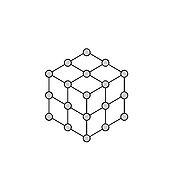
|
Soft Matter preparation 
|
Coating 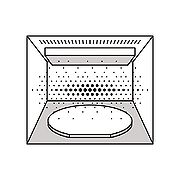
|
Light microscopes 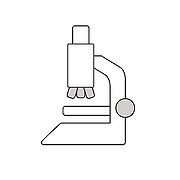
|
TEM holders 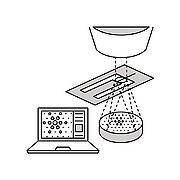
|
Others 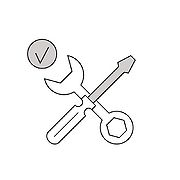
|
